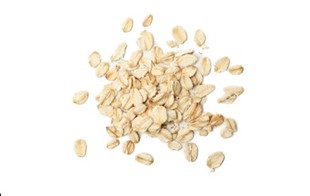
Colloidal Oatmeal is a natural product derived from oat grains (Avena sativa) that have been ground into a very fine powder. Oats (Avena sativa) have been cultivated since the Bronze Age, and the use of oats as a topical therapy for variety of dermatological conditions dates to Roman times. In the early to mid-twentieth century in the recorded scientific literature the term of colloidal oatmeal was beginning to appear. In 1945, a ready-to-use colloidal oatmeal became available, and soon after several clinical studies demonstrated its benefits as a remedy for inflamed, dry and itchy skin. In 2003, the FDA approved the use of colloidal oatmeal as a skin protectant, and currently colloidal oatmeal is commonly used for skin rashes, erythema, burns, itch, and eczema.
Rich in polysaccharides, lipids, proteins, saponins, enzymes, flavonoids, minerals, vitamins and avenanthramides.
ANTIOXIDANT
Exposing human keratinocytes to UV light resulted in a significant increase in reactive oxygen species (ROS) generation by the cells.
Avenanthramides, the active component of the Oatmeal, has an antioxidant property. The use of oatmeal extract resulted in a decrease in the UV-induced ROS generation by inhibiting NF-κB release from keratinocytes which has a key role in the activation of pro-inflammatory and oxidative pathways.
Therefore, it protects the cellular components of the skin from oxidative and destruction such as lipid peroxidation.
ANTI-INFLAMMATORY
Avenanthramides are phenolic compounds present in oats that mediate its anti-inflammatory activity. It decreases the activation of nuclear factor kappa K (NF-kappa B) pathway in keratinocytes. It also inhibits the gene expression of IL-8 in primary human keratinocytes.
Moreover, oatmeal extracts by inhibitory effects on biosynthesis and liberation of arachidonic acid from phospholipids in keratinocytes can decrease levels of the metabolites such as prostaglandins and leukotrienes, which have possible roles in the development of chronic inflammatory skin disorders.
Avenathramides has chemical structure similarity with the anti-histaminic agents. It is prostulated that avenathramides may directly inhibit histamine signaling. It can reduce the histamine release from mast cells stimulated by substance P.
Therefore, oatmeal diminish the secretion of the pro-inflammatory cytokines that are well-known key mechanisms in the pathophysiology of inflammatory dermatoses.
MOISTURIZING
The skin hydrating properties of colloidal oatmeal have been ascribed to its propensity to form an occlusive film capable of binding water in the stratum corneum, retain skin water content and decrease TEWL.
This was indicated by increased hydration, a reduced desquamation index, and a reduced surface area occupied by dead skin cells.
STRENGTHENING SKIN BARRIER
Topical application of colloidal oatmeal improves the repair of the skin barrier by promoting and restoring the skin’s natural level of essential lipids such as ceramides, cholesterol, and free fatty acids.
Oat lipid extracts also via the activation of peroxisome proliferator‐activated receptor (PPAR) pathways can induce ceramide synthesis in keratinocytes and consequently enhance skin barrier repair.
The ingredients in oatmeal, such as saponins can act as a buffer system, restoring the normal PH of the skin and through it can enhance recovery of barrier damage in skin dermatitis
When formulated to be non-sensitizing, oatmeal is safe to be used in cosmetic based on the concentration specified in this safety assessment.
https://online.personalcarecouncil.org/ctfa-static/online/lists/cir-pdfs/PRS675.pdf